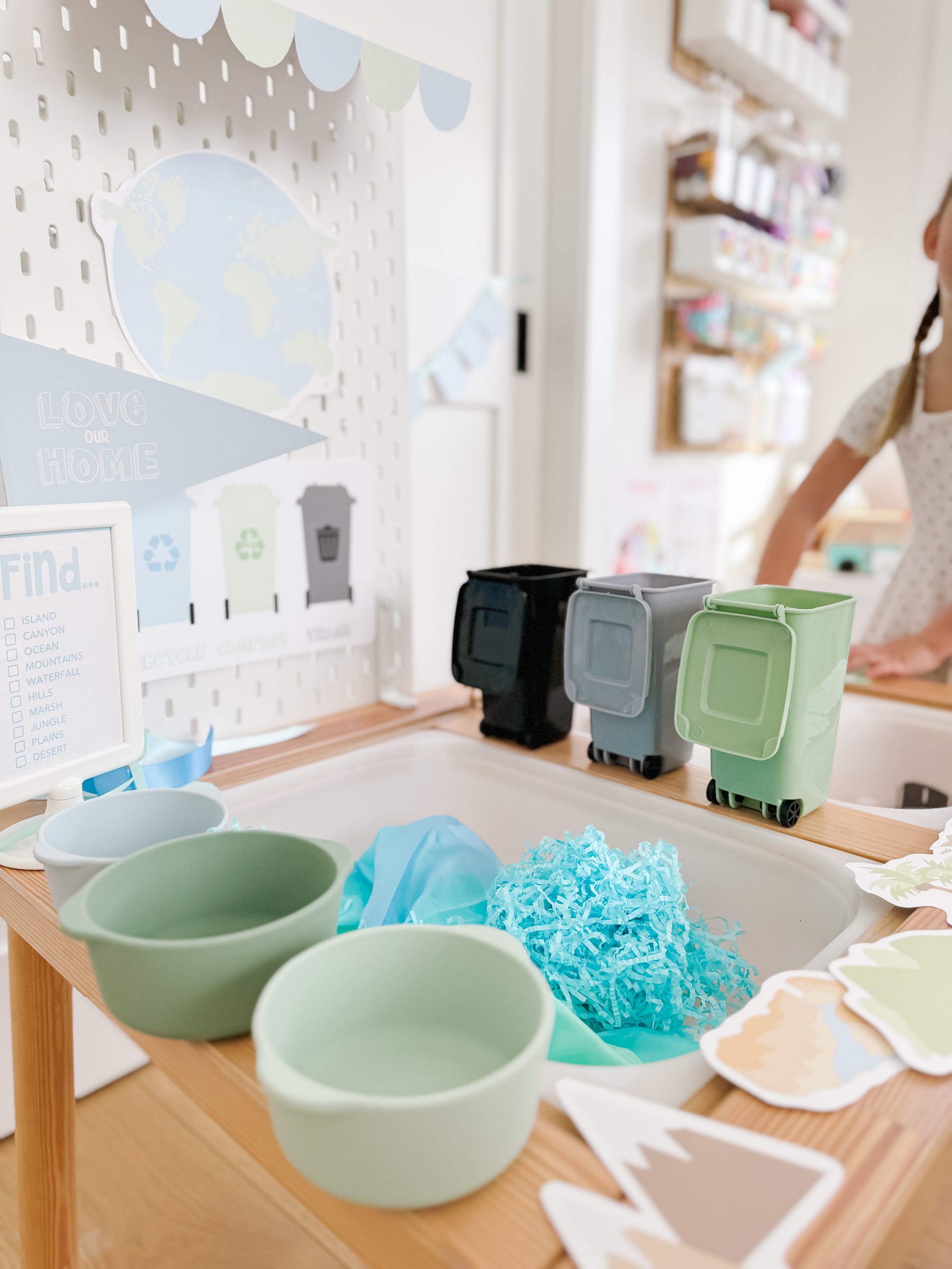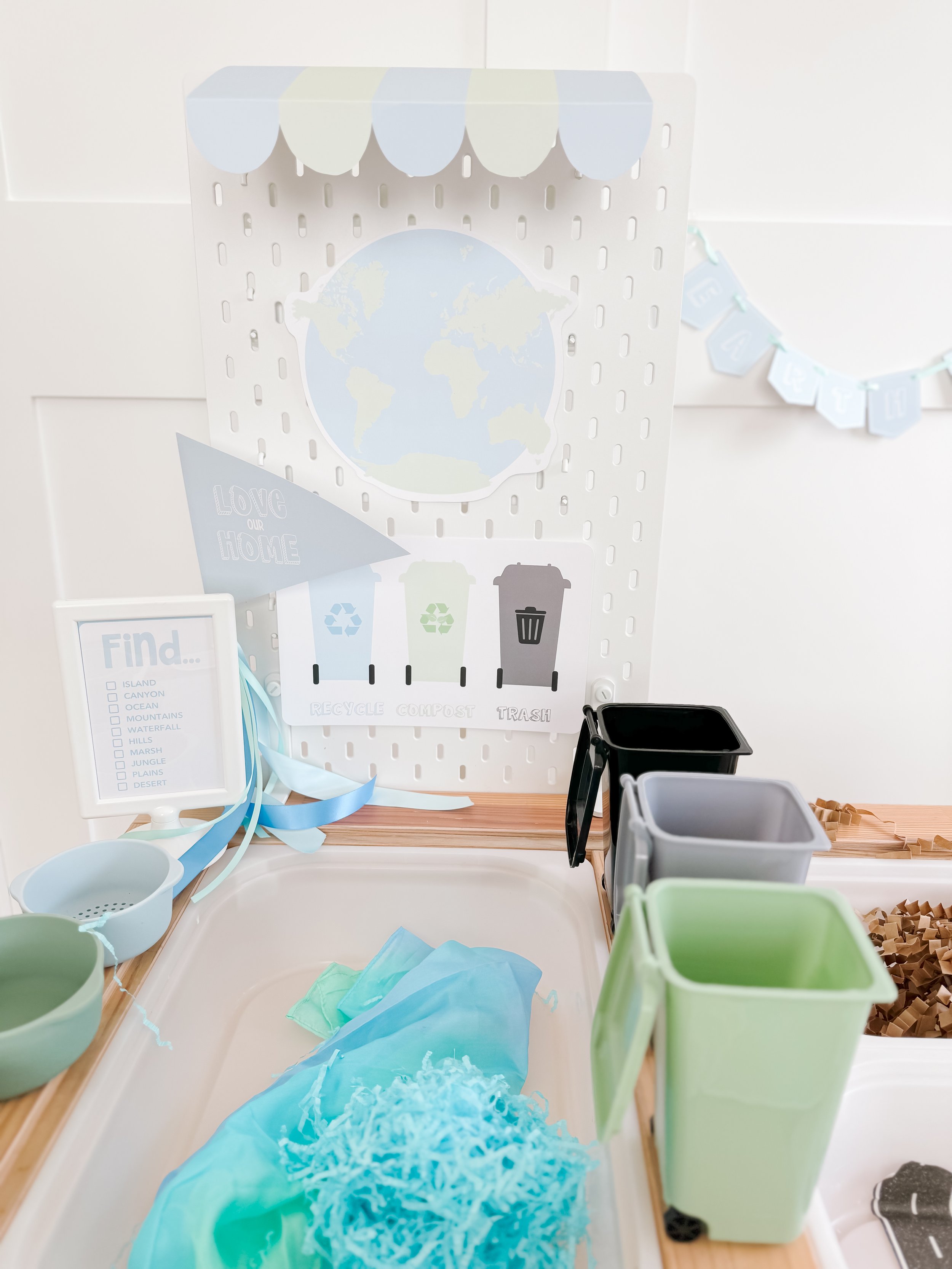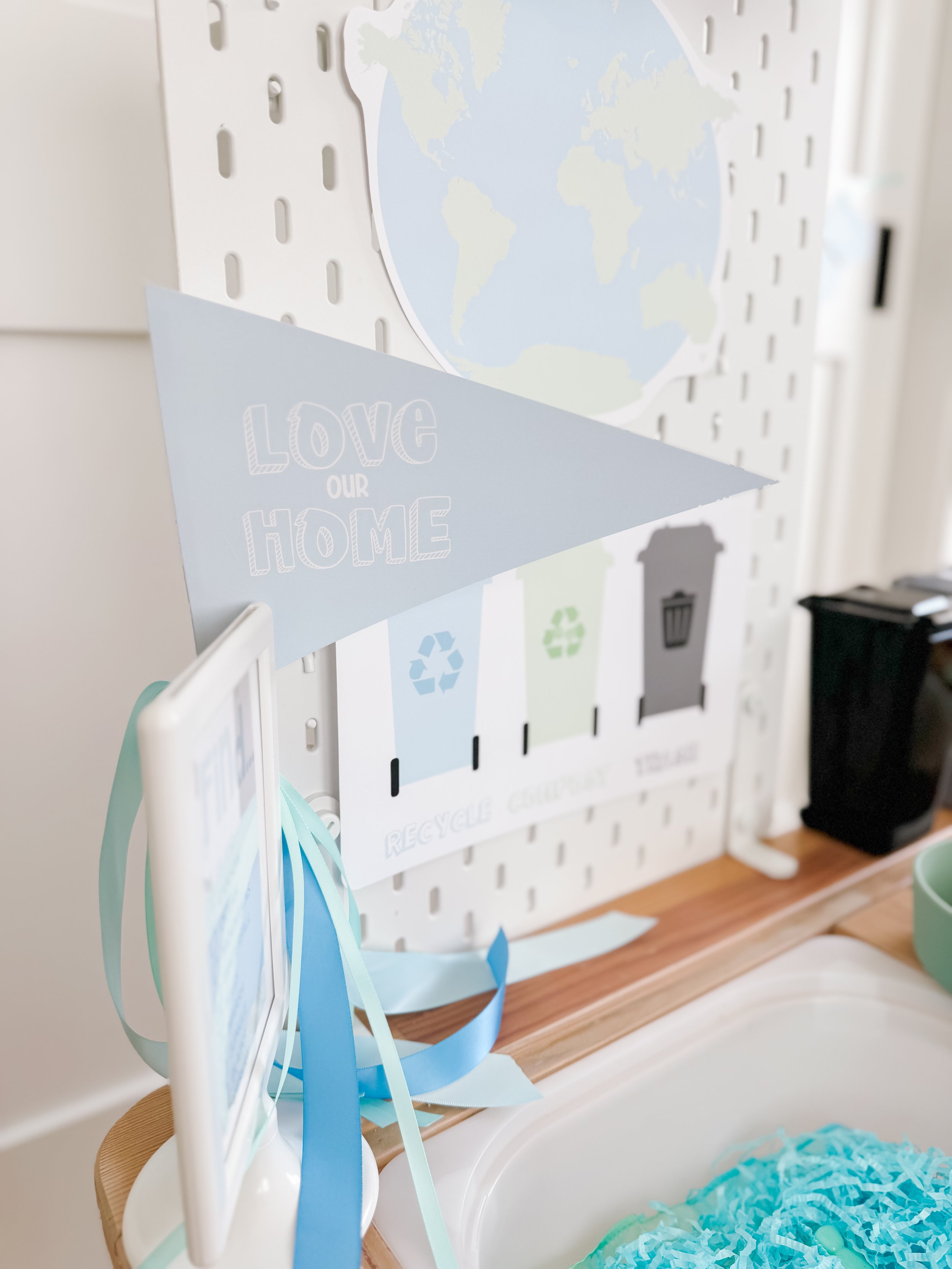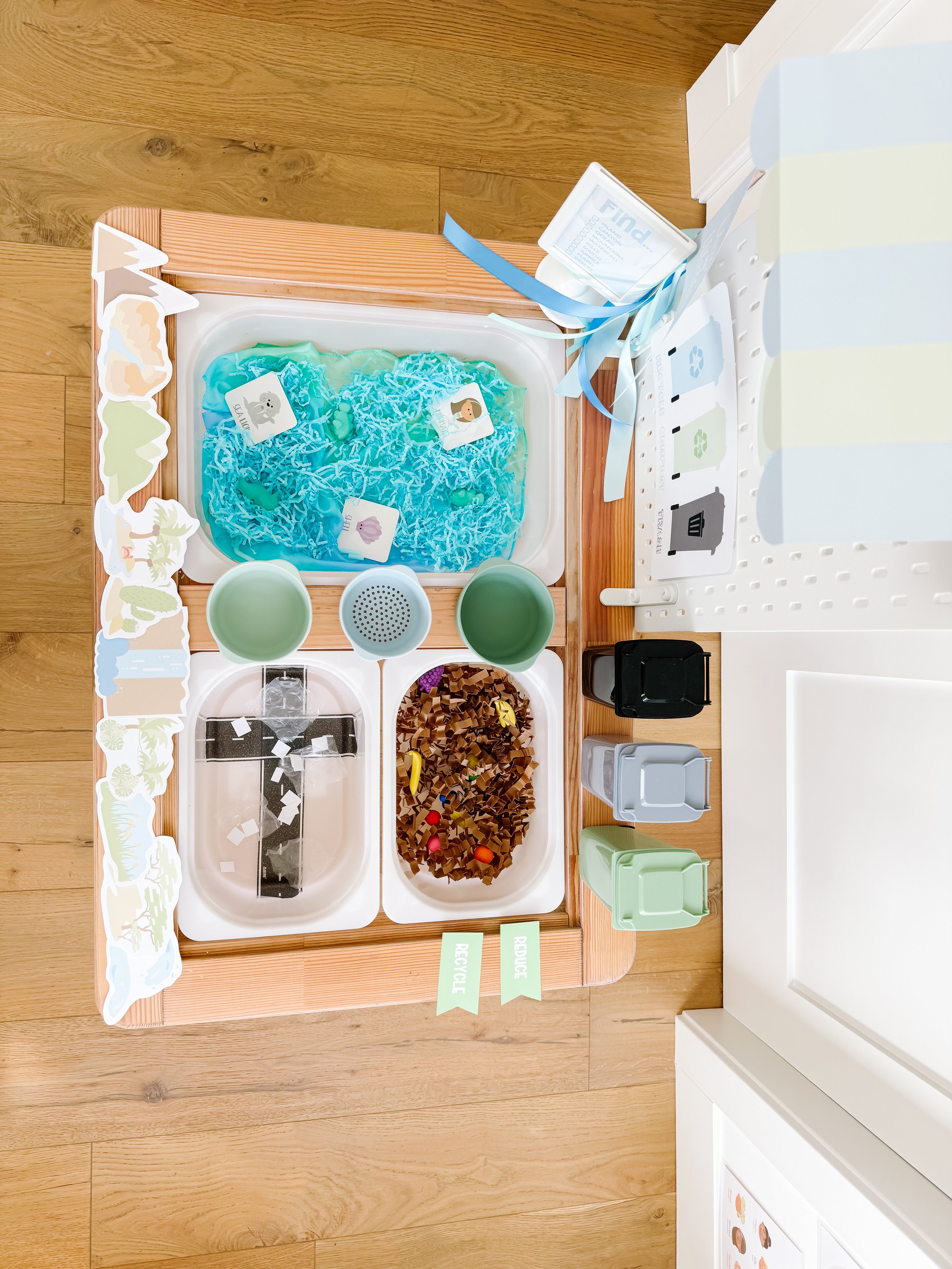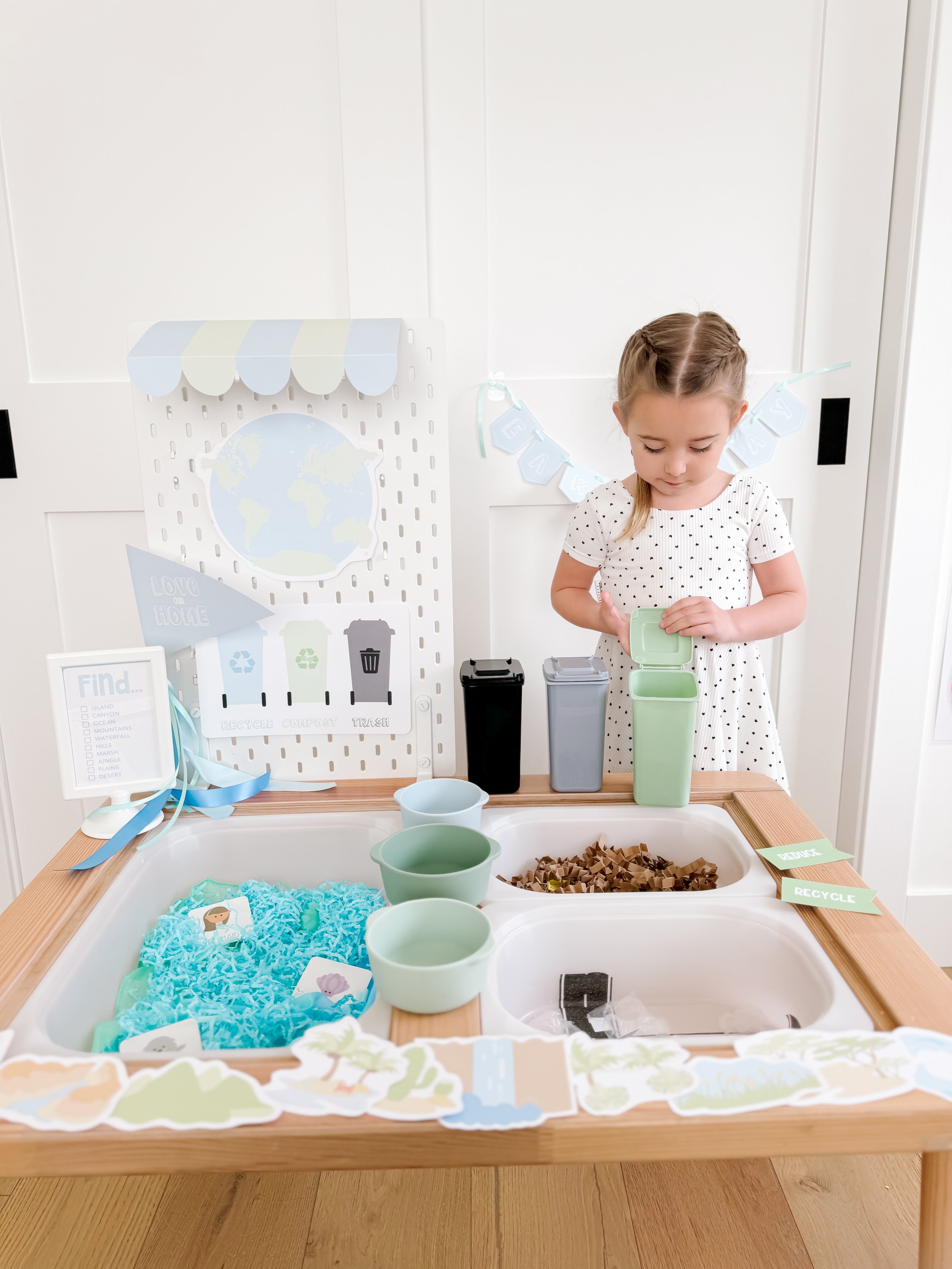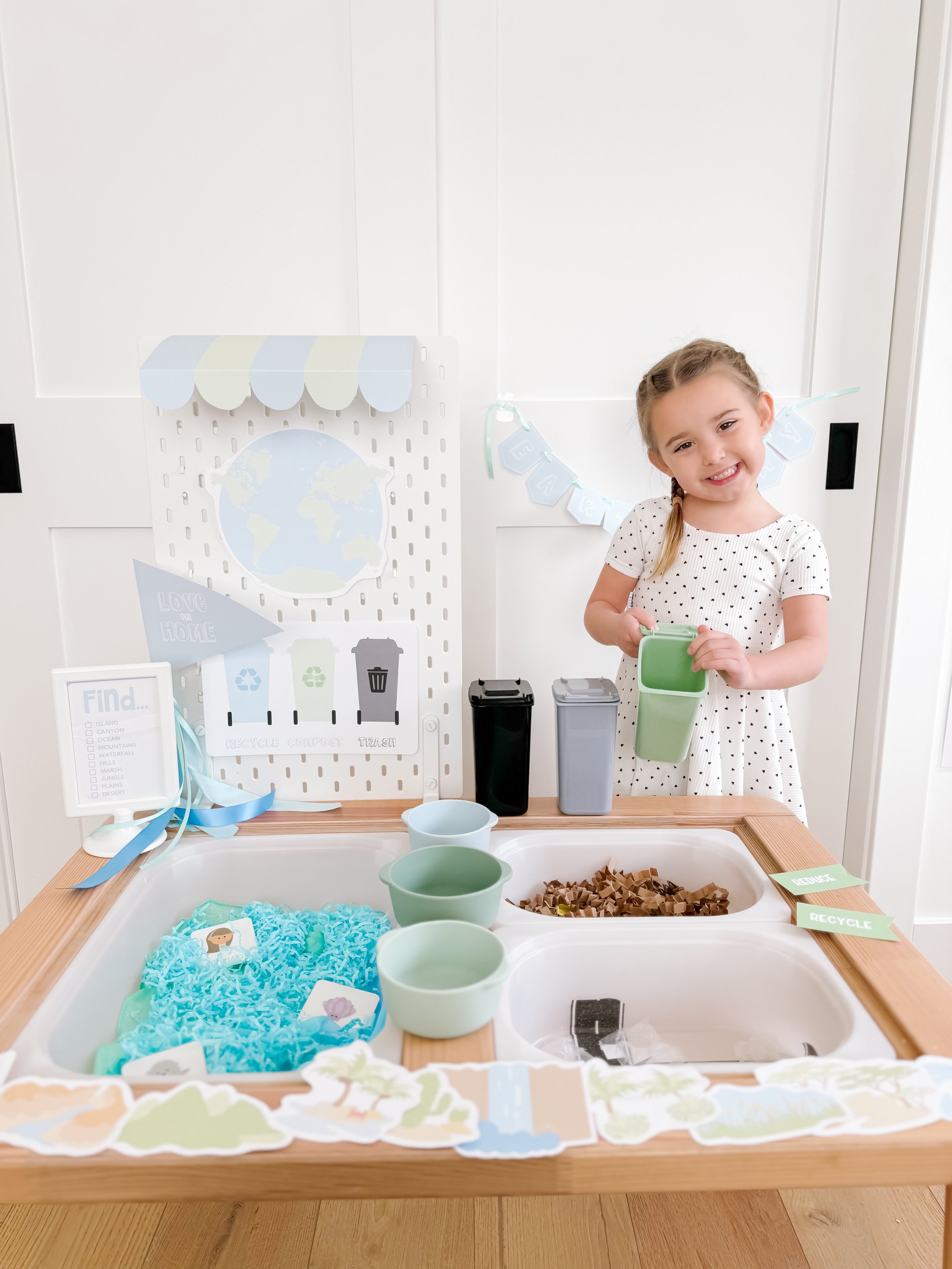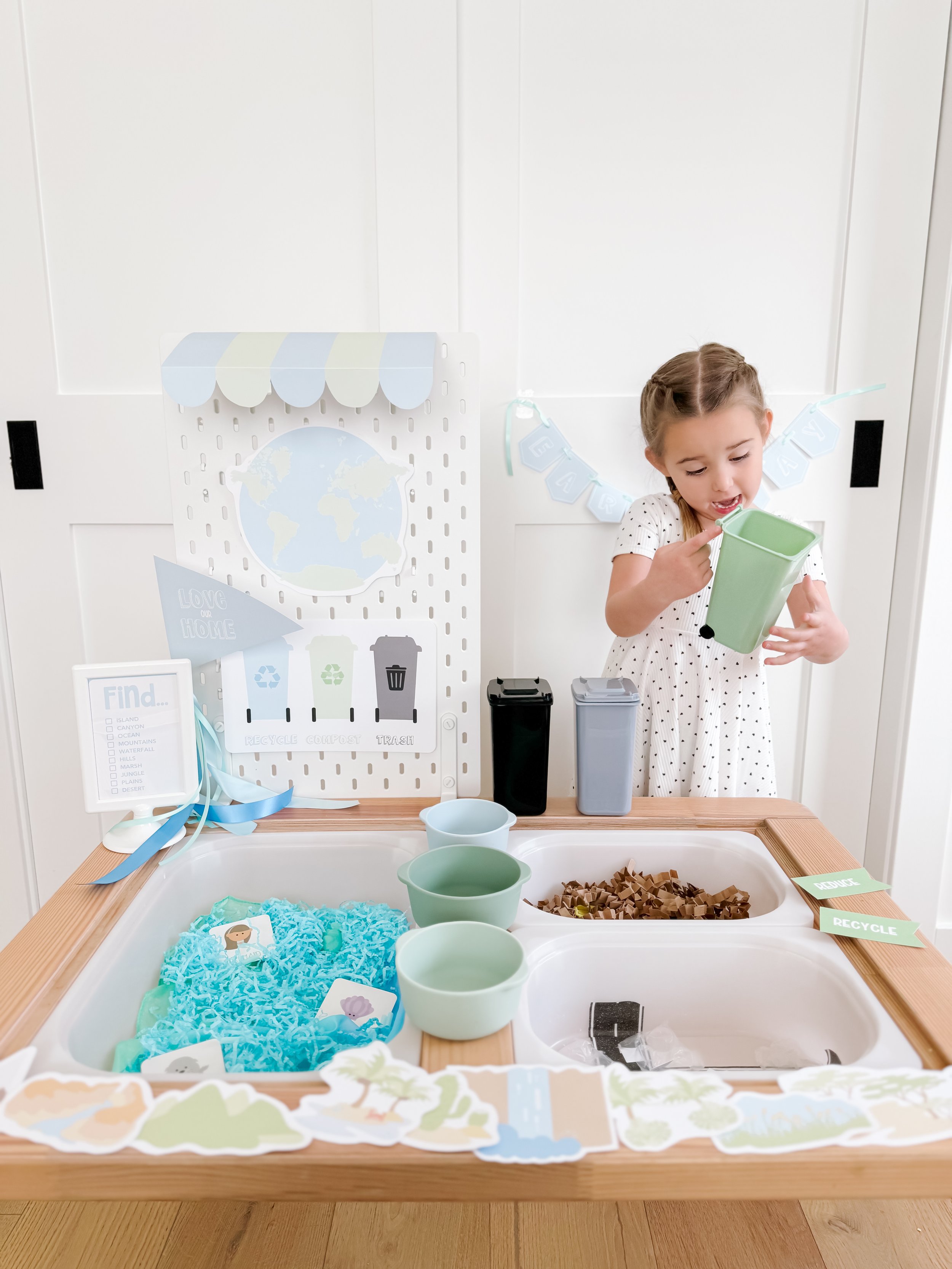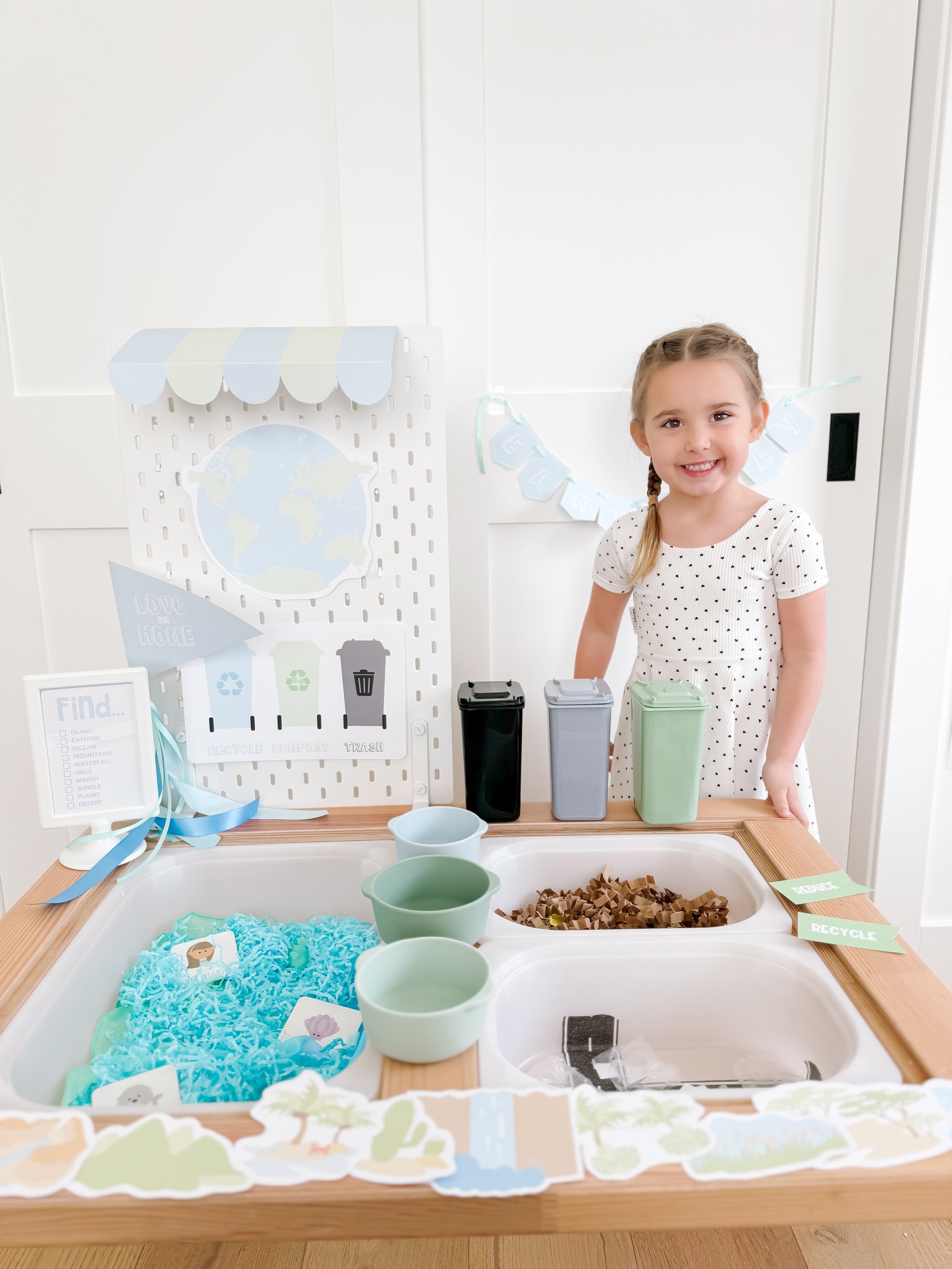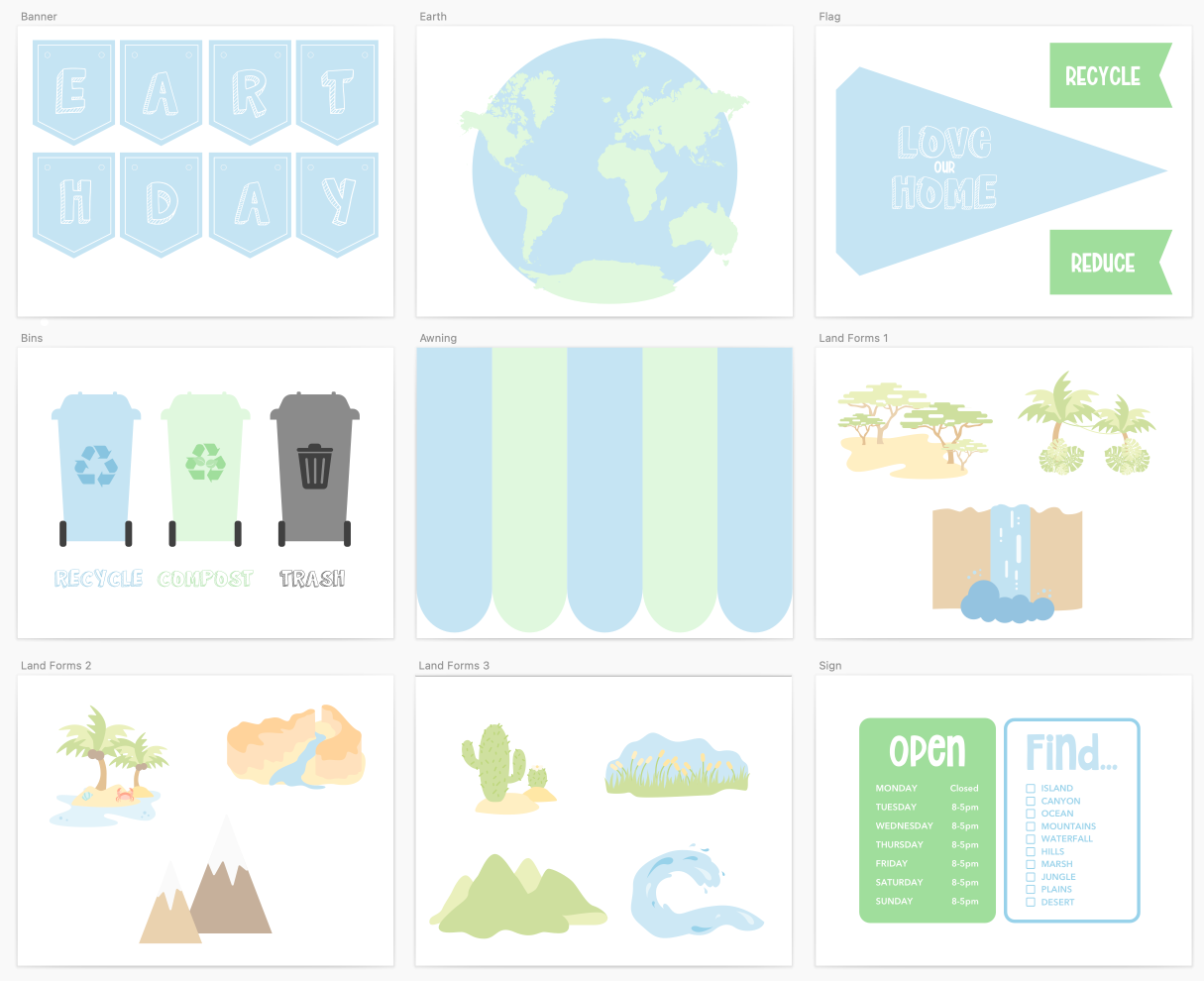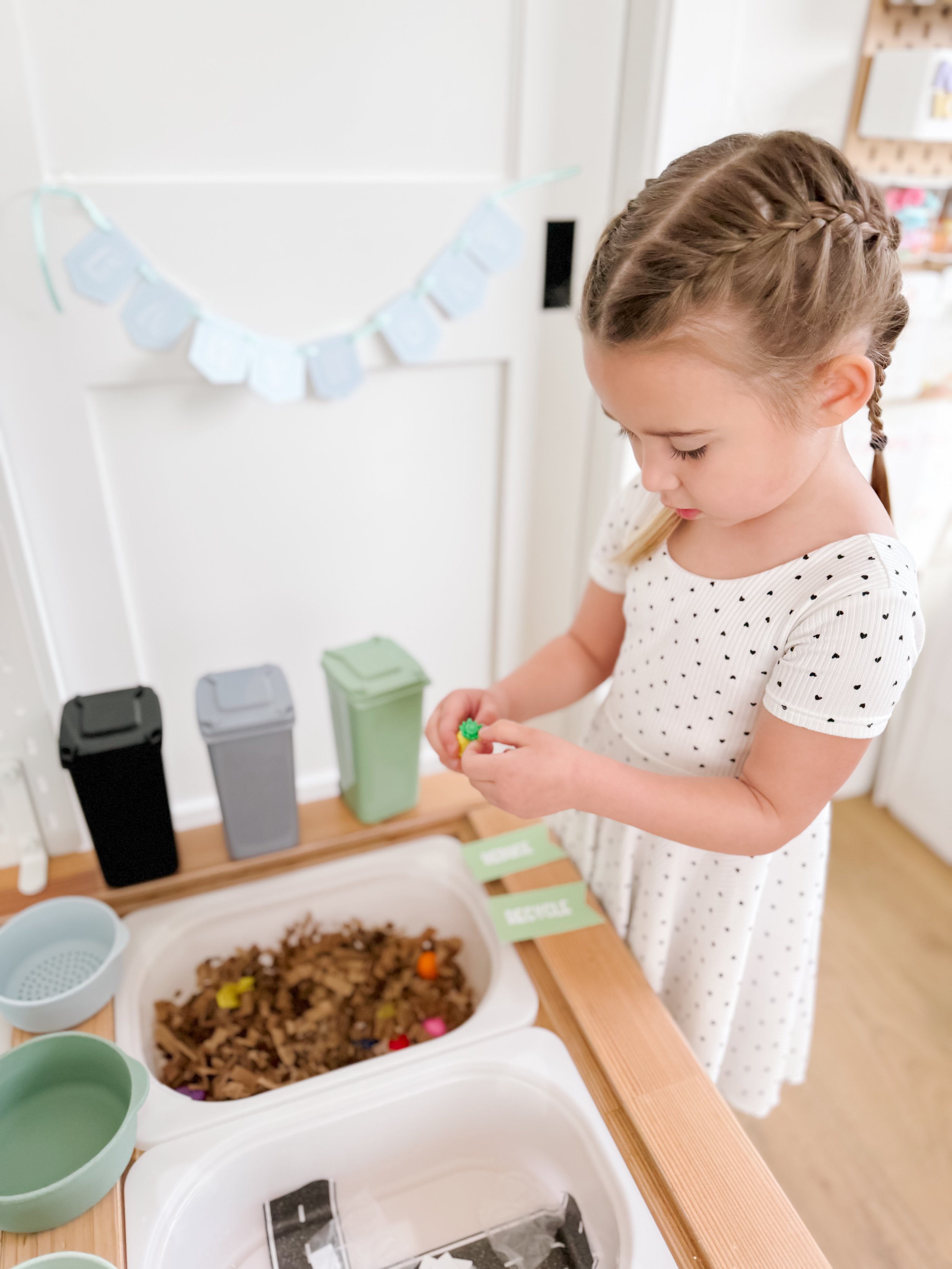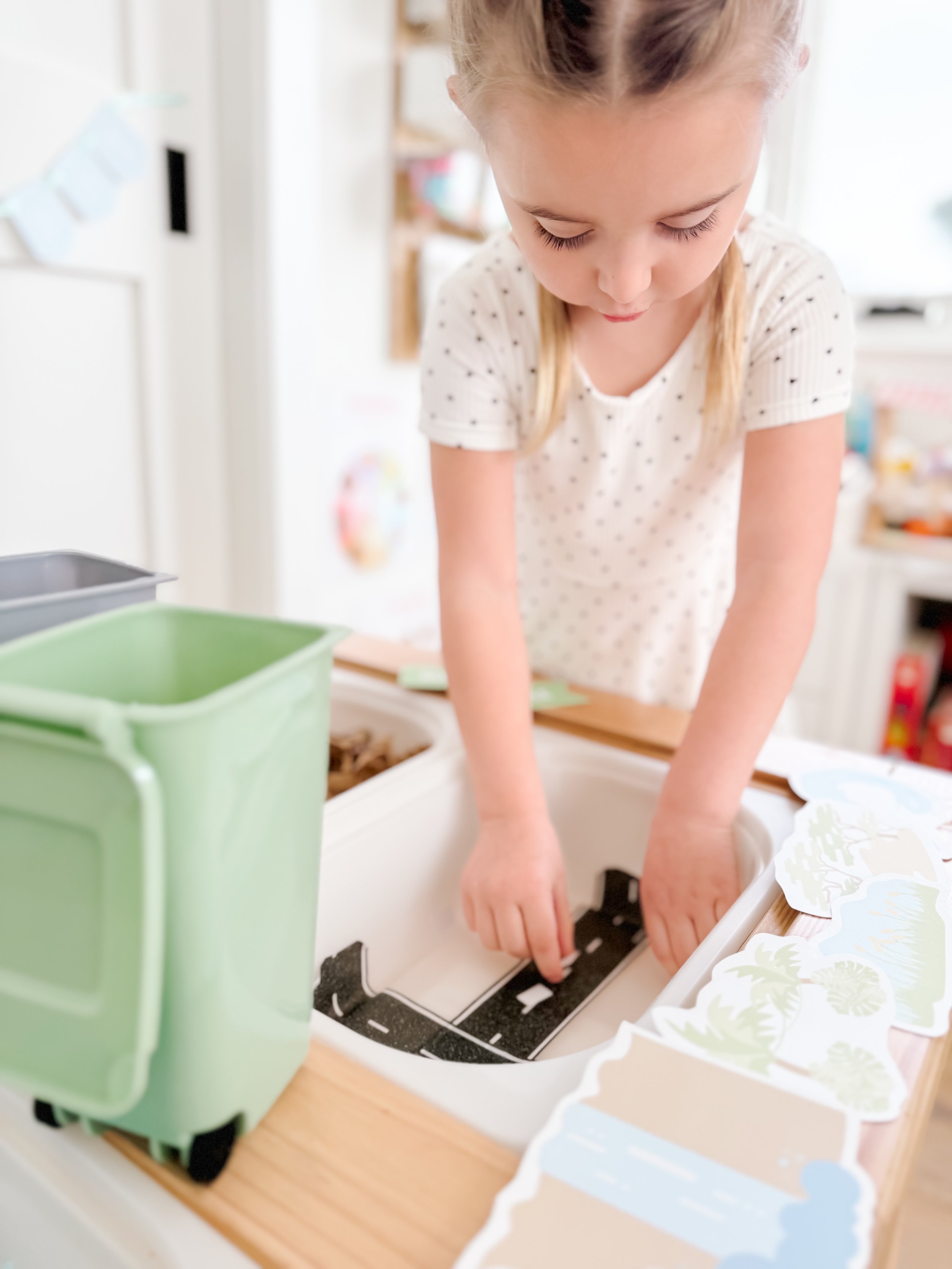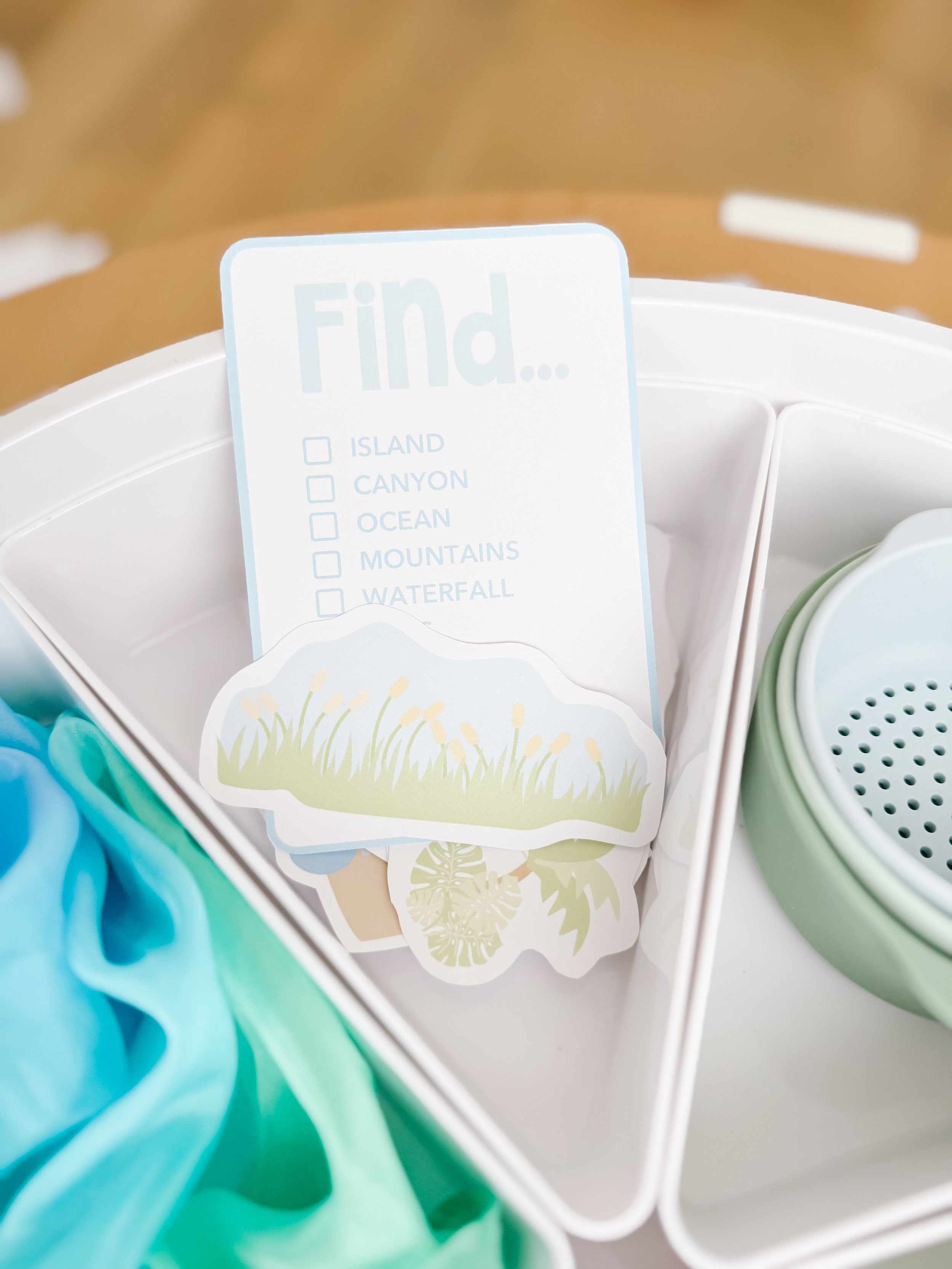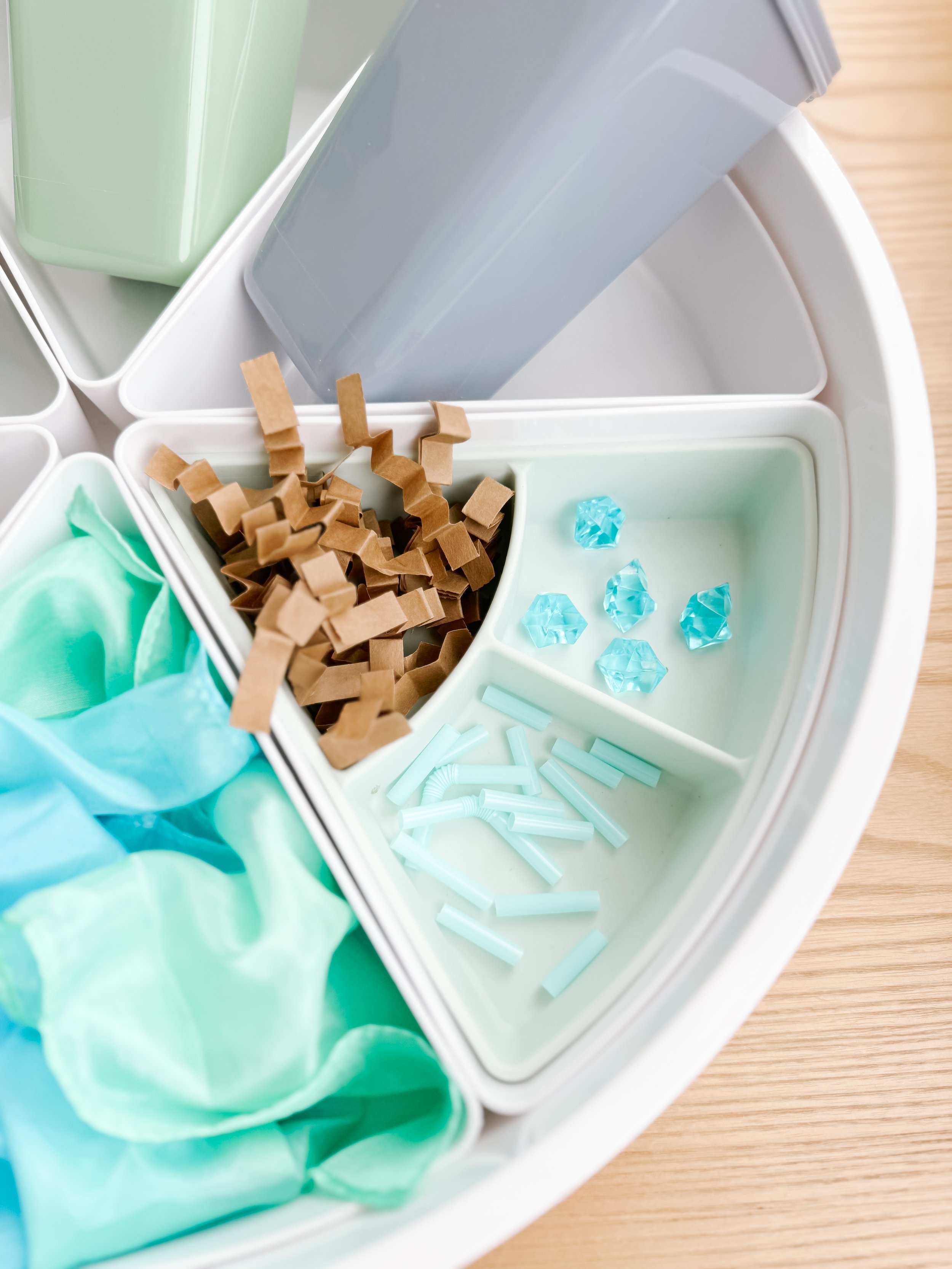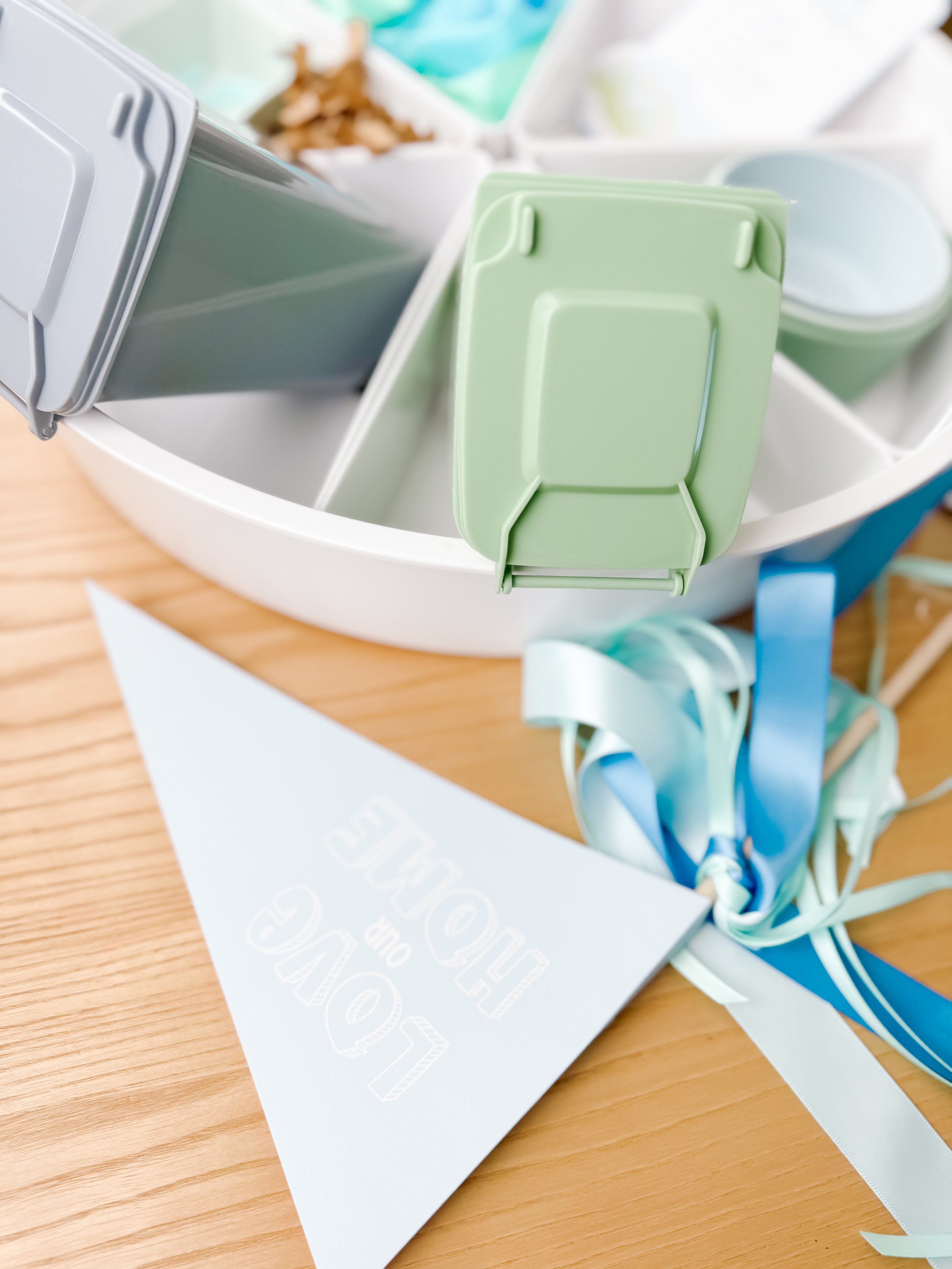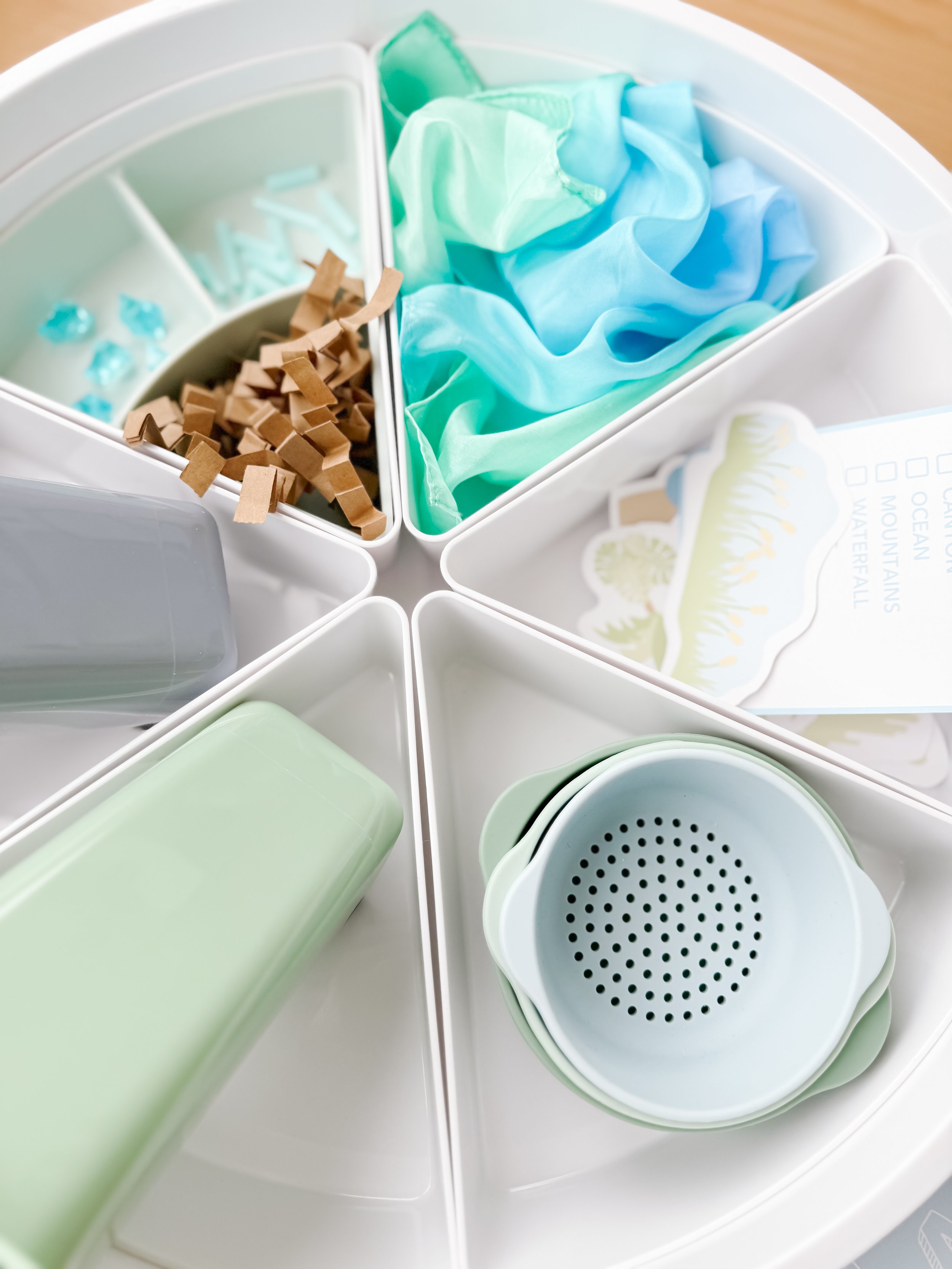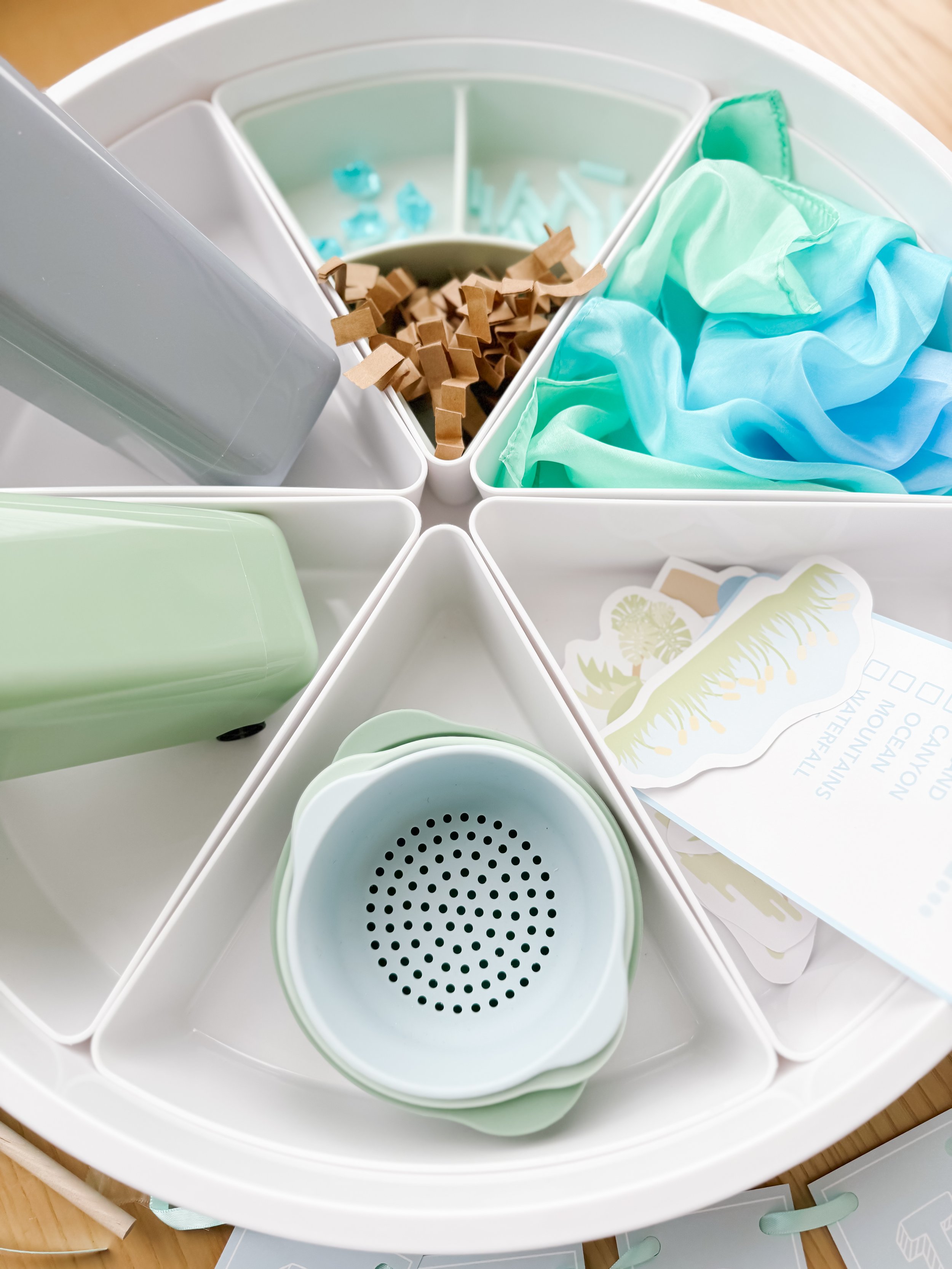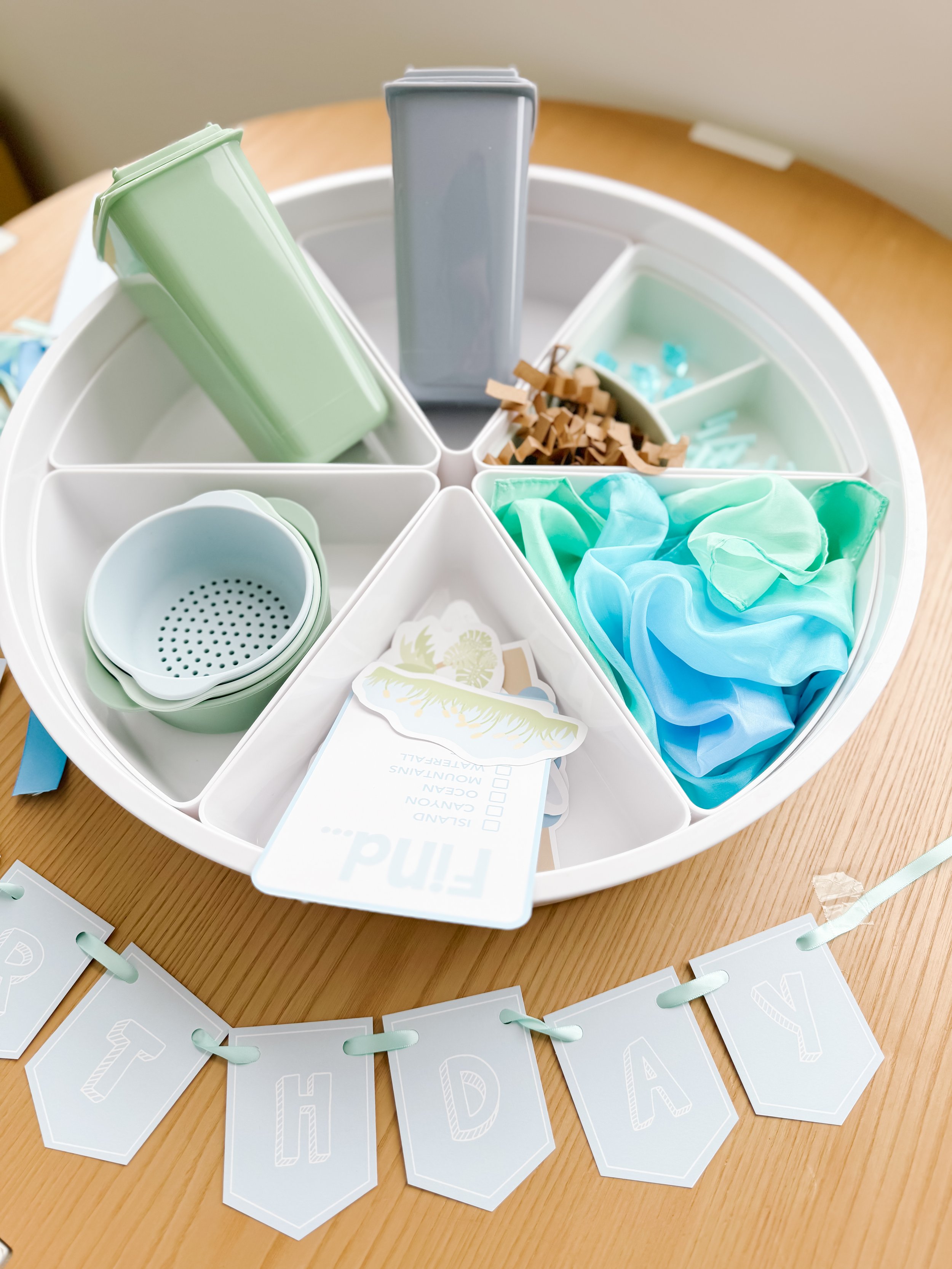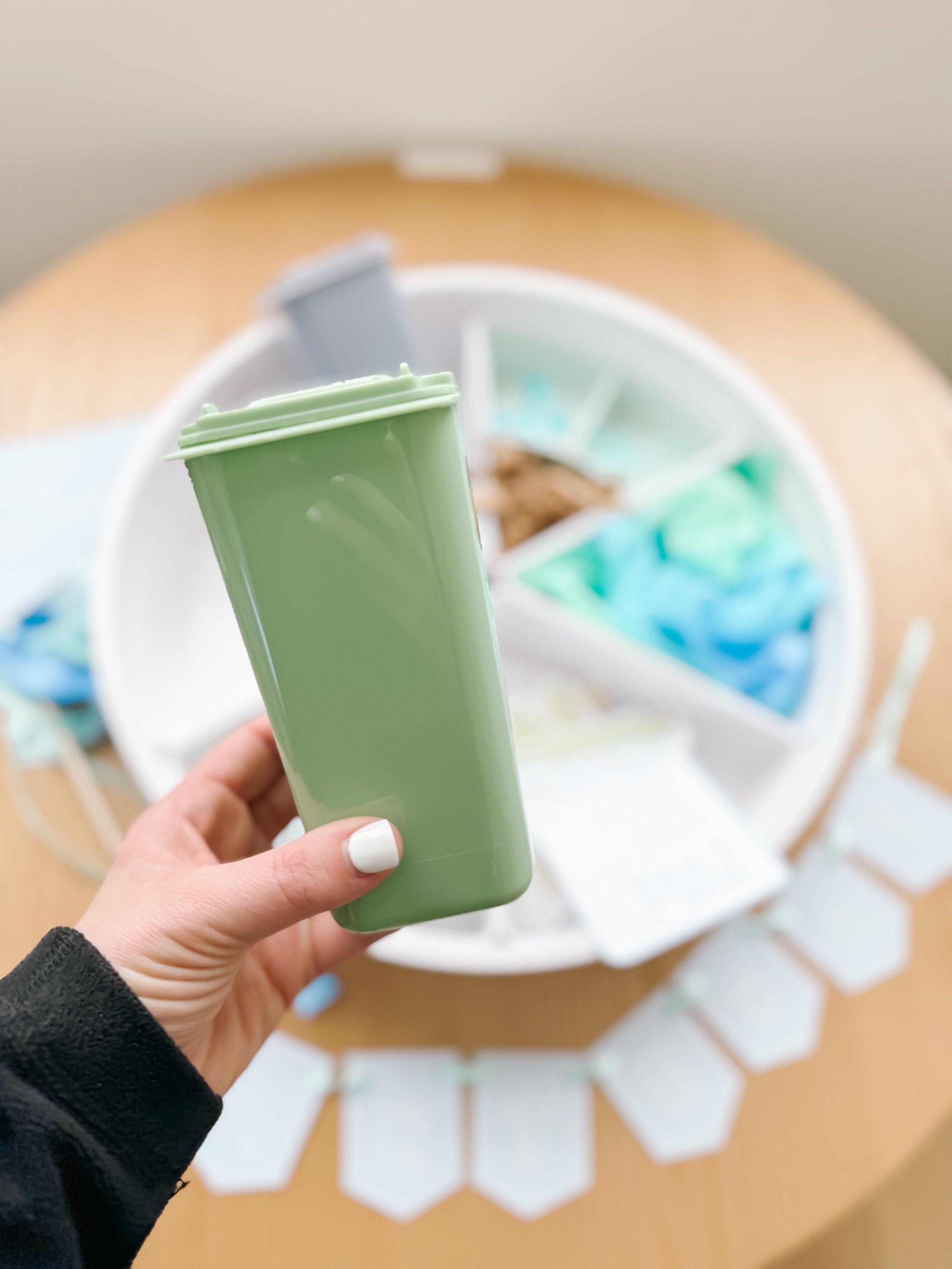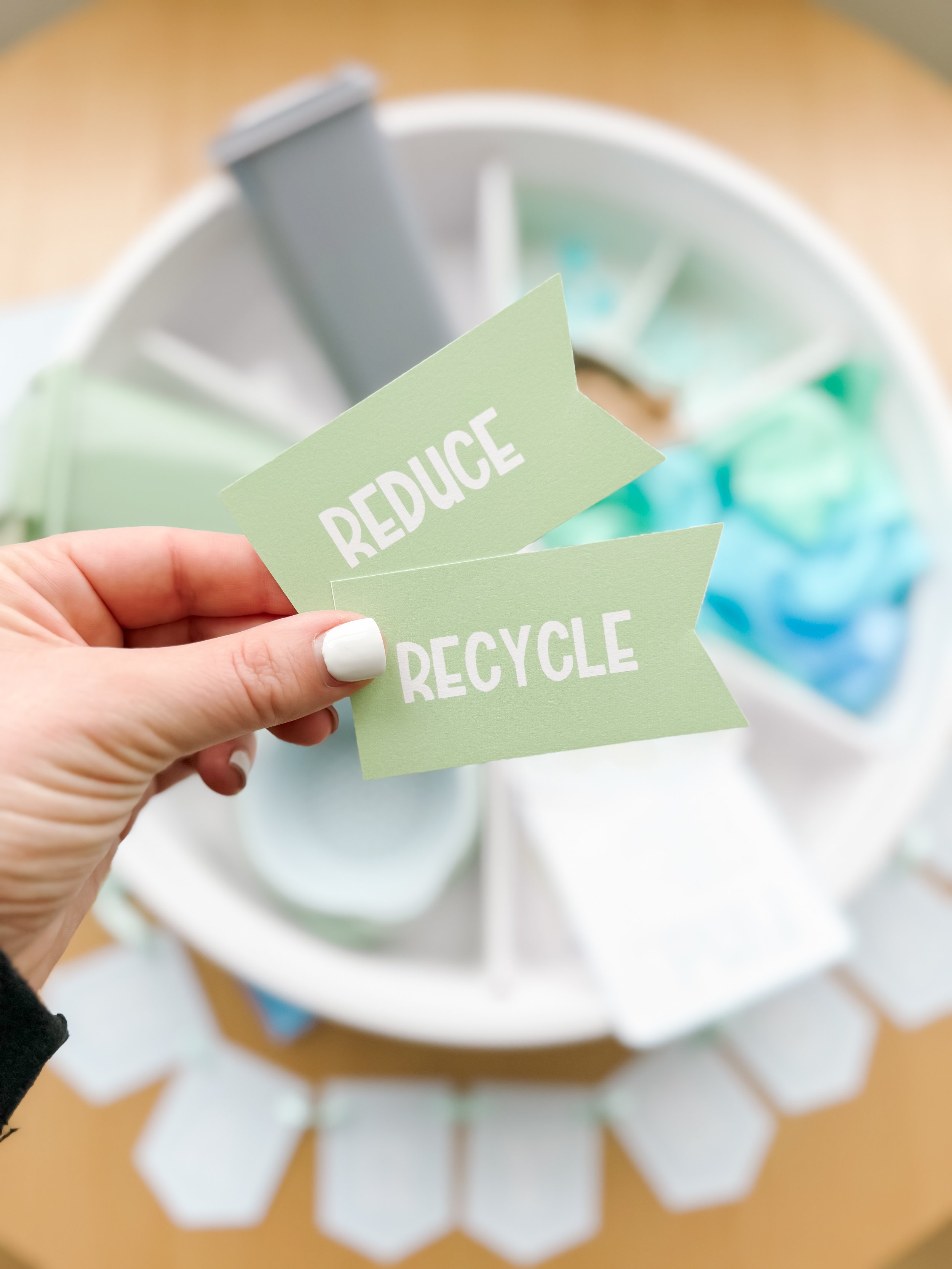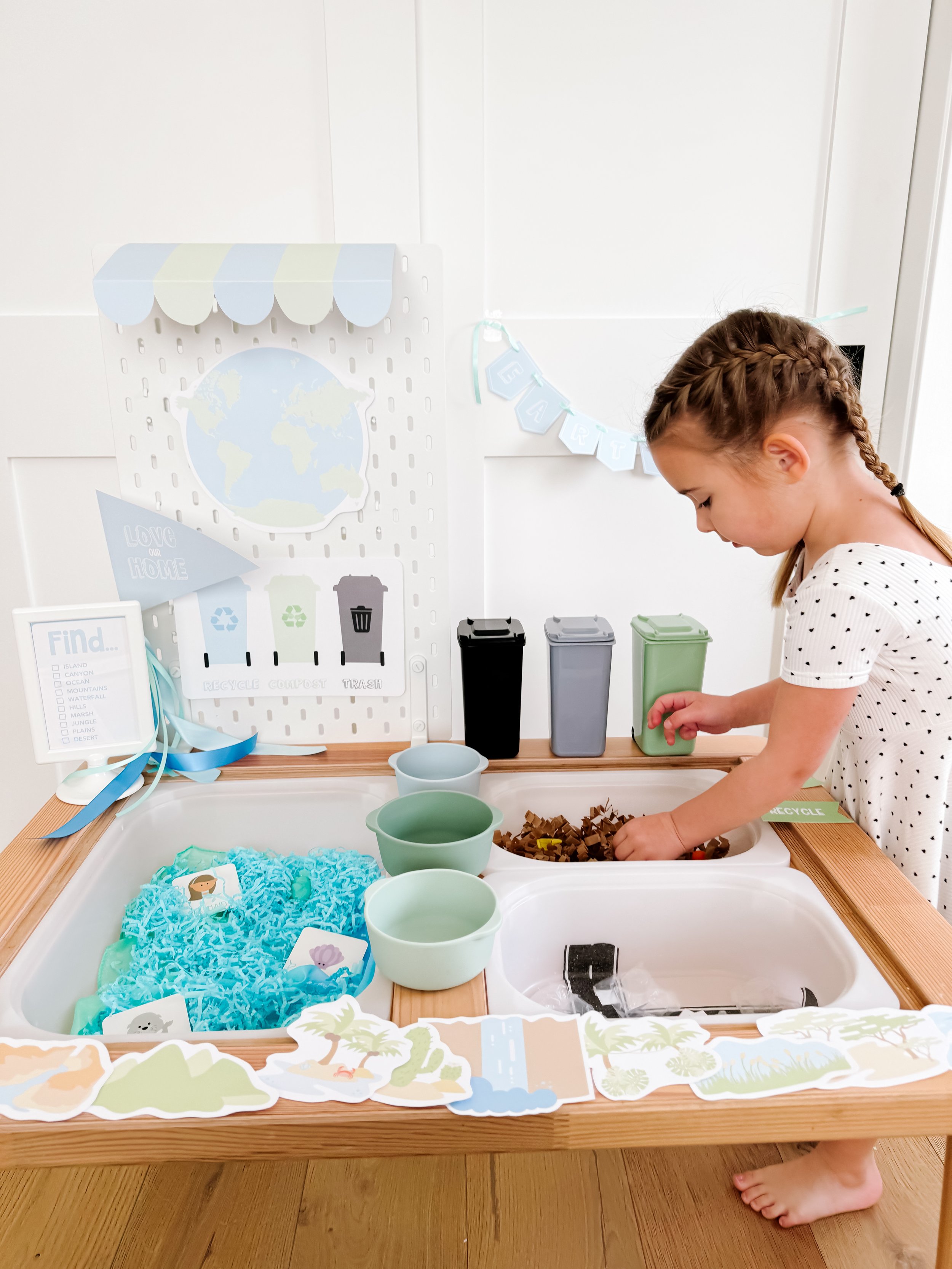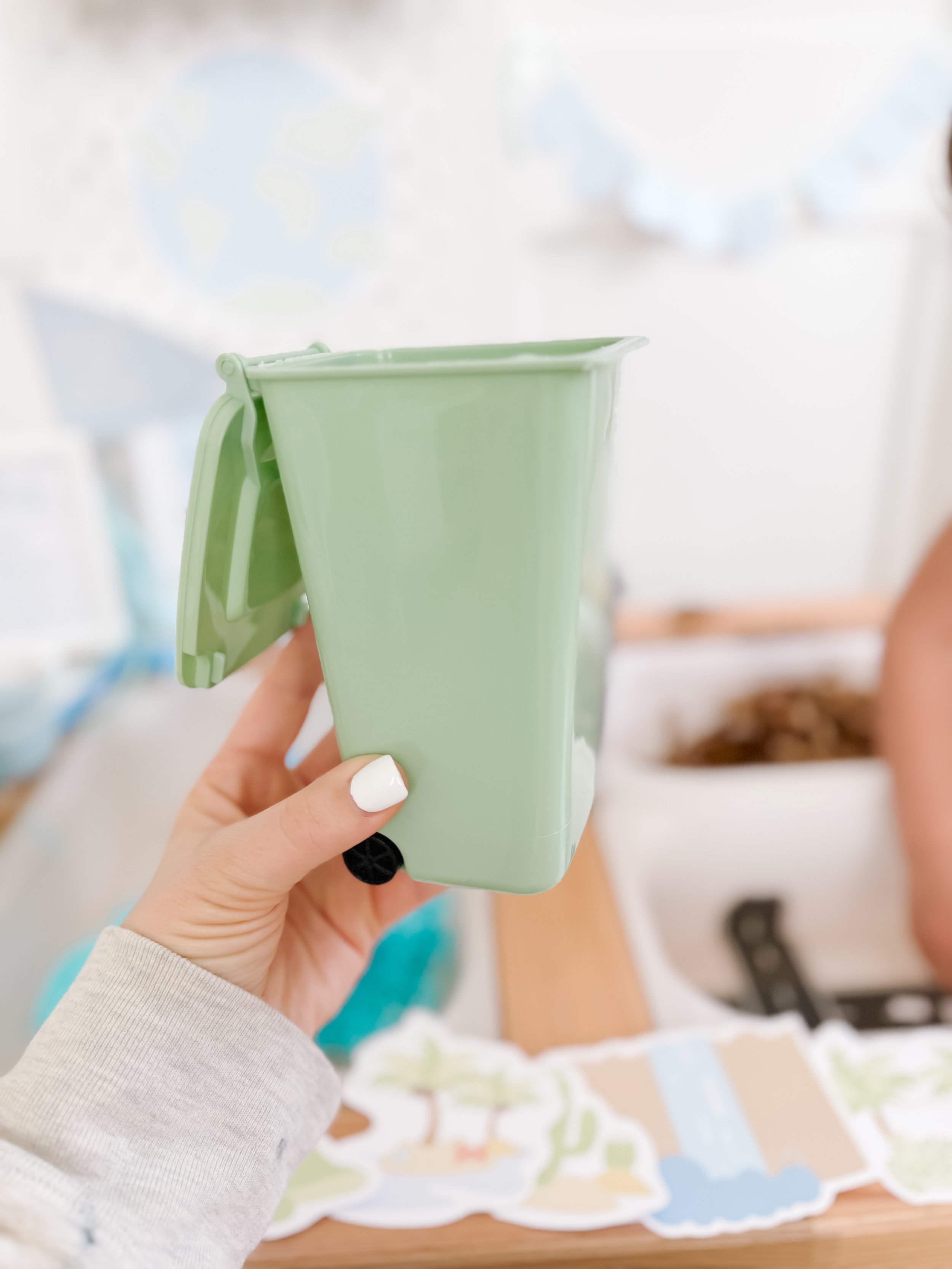Earth Day is an excellent opportunity to teach preschoolers about the importance of taking care of our planet. Engaging youngsters in sensory play activities is a wonderful way to introduce them to basic principles of recycling, sustainability, and renewable resources. In this blog post, we will explore the numerous benefits of sensory play for preschoolers and present three creative sensory bin activities to help toddlers learn experientially about the earth and the environment.
The Benefits of Sensory Play for Preschoolers
Sensory play involves any activity that stimulates a child's senses—sight, hearing, touch, taste, and smell. This type of play is not only enjoyable but also incredibly beneficial for a child's development. Here are some key advantages of sensory play for preschoolers:
1. Cognitive Development: Sensory play provides numerous opportunities for little ones to explore, discover, and problem-solve. As children engage their senses, they develop critical thinking and decision-making skills.
2. Language and Communication Skills: Engaging in sensory play encourages children to describe what they see, hear, feel, taste, and smell, fostering language development and enhancing communication skills.
3. Motor Skills Development: Activities like pouring, scooping, and manipulating objects in a sensory bin allow children to refine their fine motor skills and hand-eye coordination as they grasp, squeeze, and manipulate objects.
4. Sensory Integration: Sensory play helps children integrate information from their senses to make sense of the world around them. Exposure to different textures, sounds, and scents provides opportunities for sensory exploration and understanding.
The Importance of Environmental Education
Before jumping into the sensory play activities, it's crucial to emphasize the importance of teaching children about environmental conservation from an early age. By instilling basic principles of recycling, sustainability, and renewable resources, we can cultivate a generation that is environmentally conscious and actively cares for the earth. Here are some reasons why educating kids about the environment is vital:
1. Long-Term Sustainability: Teaching children about environmental responsibility fosters a deep understanding of the importance of preserving natural resources and ensures a sustainable future.
2. Empathy and Compassion: Learning about the environment encourages empathy and compassion, enabling children to recognize their role in preserving the earth for future generations.
3. Critical Thinking and Problem-Solving: Understanding environmental challenges sparks critical thinking skills and problem-solving abilities necessary to find innovative solutions to complex issues in the future.
Printable Activity & Decor Kit
Our Earth Day Printable Activity Kit is just what you need. Packed with engaging activities and beautiful decor, this kit will bring the spirit of Earth Day to life in your home or classroom.
Setting the right atmosphere is essential for any celebration, and our kit includes everything you need to create an inviting and festive Earth Day environment. Hang up the colorful awning above your activity station, adding a touch of vibrancy and excitement to the space. And don't forget the eye-catching banner that proudly displays the words "Love Our Earth!" It's sure to grab everyone's attention and get them into the Earth Day spirit. To complete the decor, our kit even includes a special Earth Day flag for you to display. Wave it around to let everyone know that you are committed to protecting our planet.
Activity 1: Trash Bin Sorting
Teaching children about the importance of waste management is crucial for a sustainable future. That's why our Earth Day Printable Activity Kit includes a fun and interactive Trash Bin Sorting activity. Using the provided trash can images, children can cut out and sort different types of waste into the appropriate recycling, compost, or landfill bins. This activity not only educates them about responsible waste disposal but also reinforces the importance of reducing, reusing, and recycling. For the sensory filler we used road tape to create the scene and then we littered it with cut up plastic bags, cut up card board pieces, and crinkled napkins. We also used small slices of banana peel to represent compost waste. Then we used our wooden pinchers to grab the trash and sort it into the relevant trash bins.
Activity 2: CLEAN OUR OCEANS
It’s important to not only take care of our streets and our community, but also to take care of our oceans. For this bin, we used our blue/green Sarah Silk’s play silk as the bottom and shredded blue paper as our filler. We went with a dry bin for this one, but it can also work with water or blue jello for an extra texture experience. Once you have the base, add plastics and trash to litter the ocean. We used cut up plastic straws and included some of our Ocean Animal friends from GoodnightFox and some Tender Leaf toys as well.
Activity 3: Identifying Land Forms
Understanding our planet's diverse landforms is not only educational but also fascinating. In this activity, children will learn about various landforms such as mountains, valleys, rivers, deserts, jungles, safaris and more. Using the printable worksheets, they can match images of landforms with their corresponding names, enhancing their knowledge while having fun at the same time. You can utilize this activity to spark discussions about the importance of preserving and respecting these natural wonders. You can also use any animal toys you have to match the animals with their natural habitats. We dumped all of our Tender Leaf toy animals into a bin and matched them to the land forms and Sofia had an absolute blast with it.
With the Earth Day Printable Activity Kit, learning about ecological responsibility and appreciating the beauty of our planet becomes exciting and enjoyable for children of all ages. Start preparing for Earth Day today by downloading our kit and get ready to have an unforgettable learning experience celebrating this remarkable planet we call home.
More Experiential Learning Ideas
For even more Earth day fun sensory play ideas, check out the list below!
1. Ocean Adventure Bin
Materials needed:
A large plastic container or sensory bin
Blue food coloring
Sand
Seashells
Plastic sea creatures
Pebbles
Small net or toy fishing pole
Instructions:
1. Fill the sensory bin halfway with sand.
2. Mix a few drops of blue food coloring with water and pour it onto the sand to create a vibrant, ocean-like color.
3. Add seashells, plastic sea creatures, and pebbles to the bin.
4. Encourage your child to explore the sensory bin using their hands, the net, or toy fishing pole.
5. Discuss concepts like marine life, water conservation, and protecting oceans while they play.
2. Garden Sensory Bin
Materials needed:
A shallow plastic container or sensory bin
Soil or planting mix
Small gardening tools (e.g., mini shovel, rake, watering can)
Fake or real flowers
Plastic insects or bugs
Instructions:
1. Fill the sensory bin with soil or planting mix.
2. Place fake or real flowers into the soil.
3. Add plastic insects or bugs to the bin.
4. Provide your child with small gardening tools and encourage them to dig, plant, and water the flowers.
5. Discuss the importance of plants, insects, and the role they play in maintaining a healthy environment.
3. Recycling Sort Sensory Bin
Materials needed:
A divided tray or plastic container with separate compartments
Recyclable items such as plastic bottles, paper, cans, and cardboard
Different symbols or pictures representing recycling categories (e.g., paper, plastic, metal)
Instructions:
1. Arrange the recyclable items in the divided tray or separate compartments.
2. Introduce the different symbols or pictures representing recycling categories.
3. Guide your child and encourage them to sort each item into the corresponding category.
4. Discuss the significance of recycling, the importance of reducing waste, and its positive impact on the environment.
By engaging in these sensory bin activities, preschoolers will explore the wonders of
Vocabulary Words for Preschoolers to Learn about the Environment for Earth Day
1. Earth: Our planet, where we live.
2. Environment: Everything around us, including plants, animals, and nature.
3. Conservation: Taking care of and protecting our environment.
4. Recycling: Turning used materials into new things.
5. Reduce: Using less of something to create less waste.
6. Reuse: Using something again instead of throwing it away.
7. Composting: Turning food scraps and yard waste into nutrient-rich soil.
8. Water: The clear liquid that we need to survive and is found in rivers, lakes, and oceans.
9. Air: The invisible mixture of gases that we breathe.
10. Pollution: Harmful substances that make the air, water, or land dirty.
11. Renewable Energy: Energy that is made from resources that won't run out, such as wind and sunlight.
12. Conservationist: Someone who works to protect nature and the environment.
13. Plant: A living thing that grows in the ground and uses sunlight to make its food.
14. Animal: A living thing that can move around and needs food, water, and shelter to survive.
15. Habitat: The natural home or environment where an animal or plant lives.
16. Forest: A large area covered with many trees and plants.
17. Ocean: A large body of saltwater that covers most of the Earth's surface.
18. Ecosystem: A community of living organisms and their interactions with their environment.
19. Biodiversity: The variety and types of plants and animals that exist in an ecosystem.
20. Compost Bin: A container used to collect and make compost from food scraps and organic waste.
21. Solar Power: Energy that comes from the sun and is used to generate electricity.
22. Wind Energy: Power that is harnessed from the wind to create electricity.
23. Conservation Area: A protected place where plants and animals can live safely.
24. Earth Day: A day dedicated to learning and taking action to protect the environment.
25. Nature: The natural world around us, including plants, animals, and landscapes.
Remember, preschoolers may be unfamiliar with some of these words, so it's essential to explain and reinforce their meanings in age-appropriate ways. Happy Earth Day!



